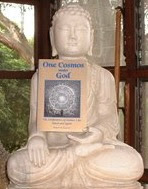Good way to put it, Petey. For De Koninck, man is indeed the raison d’être of the whole of nature; and if true, it explains a lot of things that are otherwise inexplicable, for example, our immaterial transcendence of the physical cosmos.
That is to say, knowledge of material reality presupposes our transcendence of it. By way of analogy, suppose you are confined to a two-dimensional Flatland. First, how could you ever know that reality is a two-dimensional plane, since you are restricted to those same two dimensions?
Intellectual natures have a greater affinity to the whole than other beings; for every intellectual being is in a certain manner all things...
Our intellect in understanding is extended to infinity.... In its active nature the intellect is therefore capable of knowing everything that exists.... [T]he ultimate perfection to which the soul can attain is that in it is reflected the whole order of the universe and its causes (Thomas Aquinas).
Or, in the words of De Koninck, "Already in man the world is bent in on itself, and in God its extremes touch." Which reminds me of Schuon's claim that
Fundamentally there are only three miracles: existence, life, intelligence; with intelligence, the curve springing from God closes on itself like a ring that in reality has never been parted from the Infinite.
To the question of knowing why man has been placed in the world when his fundamental vocation is to leave [i.e., transcend] it, we would reply: it is precisely in order that there be someone who returns to God.
Again: full circle.
Bottom line for today: we agree with De Koninck that "Creation is essentially a communication." Which implies messenger, message, and recipient, each entailing the others. Now, supposing man is the most important message of creation...
Hold that thought. A cliffhanger.
The Human Silhouette/Head:
Symbolism: This represents "man" or humanity itself, the "intellectual nature" that is the focus of your post. It embodies the concept of "human understanding" as the crucible in which the cosmos becomes a "universe in the full sense."
Connection to Post: It directly reflects your argument that creation might be "ordered to man" and that man is the "ultimate reason for the whole he-bang."
The Cosmic Structure (Galaxy/Universe):
Symbolism: This vast, swirling galaxy represents the "cosmos," "creation," "nature," and "material reality." It's the "whole of nature" that, according to De Koninck, finds its raison d'être in man.
Connection to Post: It symbolizes the "Flatland" of our perceived reality, but with the implication that it's open to something more.
The Connecting Lines/Light Trails from Head to Cosmos:
Symbolism: These luminous lines are perhaps the most crucial symbolic element. They represent the profound, almost mystical "suspicious relationship between the human intellect and intelligible being." They illustrate the idea that the human mind is not merely in the cosmos but deeply connected to and able to comprehend it in a way that transcends mere physical presence.
Connection to Post:
They visualize the "key" that opens us to a "higher dimension of reality."
They suggest how "knowledge of material reality presupposes our transcendence of it."
They depict the idea that "man contains the cosmos and not vice versa," showing the universe being "bent in on itself" within human understanding.
They can be seen as the "communication" that creation essentially is, where man is the "recipient" and "most important message."
The Glowing Light/Energy within the Head (especially near the brain area):
Symbolism: This signifies intellect, consciousness, enlightenment, and immaterial transcendence. It highlights the divine spark or the unique capacity of human intelligence to grasp truth, meaning, and unity beyond the material.
Connection to Post: This directly relates to your points about "our immaterial transcendence of the physical cosmos," being "open to higher dimensions of truth, understanding, meaning, unity, beauty," and Schuon's idea that with "intelligence, the curve springing from God closes on itself."
In essence, the image portrays the human mind as a focal point or a "mirror" through which the vastness and order of the universe are understood, suggesting an inherent, almost predestined, relationship between the two, as described in your post.































No comments:
Post a Comment